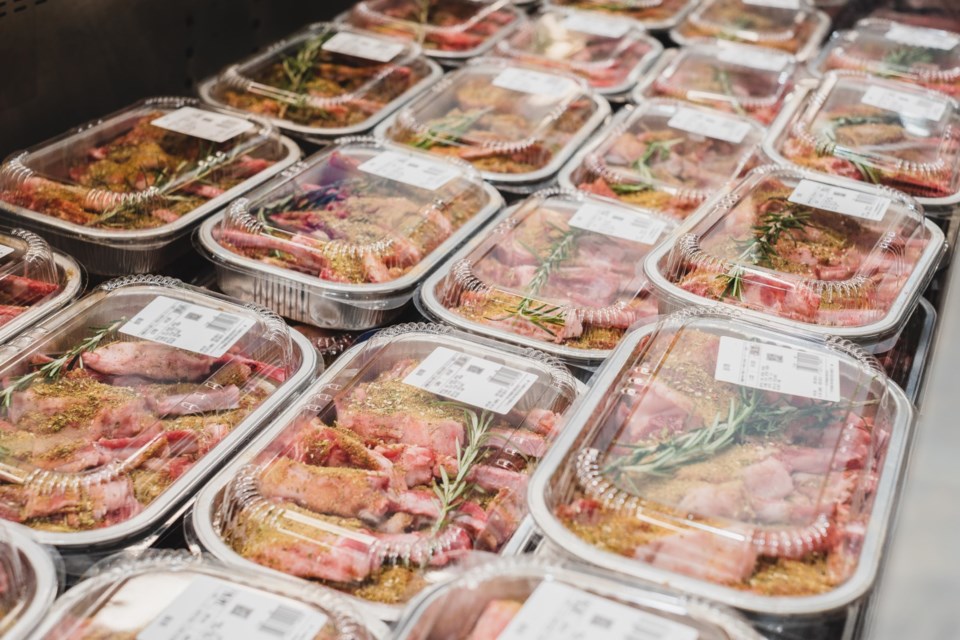Four years ago, we were all in lockdown. It was total confusion. With empty shelves, many wondered if Canada was facing a food shortage and if prices would be affected. With varying health restrictions from region to region worldwide, supply chains were heavily strained.
And almost two years later, it was a catastrophe in Ukraine. Russia's illegal invasion pushed the prices of most agri-food products to record levels. For example, the price of wheat reached $12 per bushel for the first time in history.
Indeed, our food inflation rate reached 11 percent over a year ago, much to the dismay of consumers here and elsewhere.
Some believe that food prices have doubled since 2020. According to Statistics Canada's data, prices have increased by 21 percent across all categories since March 2020. It's not double, but 21 percent is a lot. Due to price volatility, many people feel the increase is closer to 100 percent.
|
Products |
Price Reduction |
|
Almonds |
-19 percent |
|
Pork shoulders |
-14 percent |
|
Canned tuna |
-14 percent |
|
Pork chops |
-13 percent |
|
Chicken breasts |
-3 percent |
|
Whole chicken |
0 percent |
|
Spinach |
0 percent |
|
Canned salmon |
0 percent |
|
Banana |
0 percent |
|
Pears |
0 percent |
|
Tomatoes |
0 percent |
|
Source: |
Statistics Canada |
Olive oil has increased the most, at 83 percent, followed by cantaloupes at 76 percent. These two categories have been affected by production issues related to climate change. Cantaloupes were even affected by a major recall a few months ago. Vegetable oil has increased by 72 percent, canola oil by 51 percent, margarine by 67 percent, and strawberries by 58 percent. All products are more expensive than in 2020, but there are exceptions.
Some will be surprised to learn that some products are cheaper than they were four years ago in March 2020. First, almonds are 19 percent cheaper than in 2020. Pork shoulders are 14 percent cheaper than in March 2020. Pork ribs are also 13 percent cheaper. Canned tuna is also less expensive, at 14 percent. Even chicken breasts, according to Statistics Canada, are three percent cheaper. A year ago, a viral photo of expensive chicken breasts angered everyone, leading to a social media campaign condemning possible grocer abuses. It was panic, or almost.
Products roughly the same price are whole chicken, spinach, canned salmon, the famous banana, pears, and tomatoes.
If all this is hard to believe, it may be because our trust in Statistics Canada is not very high.
Despite this data, it is certainly not what people feel when paying for groceries. While some food categories may have some immunity to inflation, our perceptions are often influenced by price volatility. Let's look at the standard deviations of prices over the past four years.
The standard deviation of food prices can tell us how much they vary compared to their average. Since March 2020, the category with the highest standard deviation is beef. Depending on the cut, the standard deviation varies between four and five. Salmon has a standard deviation of over four. Chicken breasts and vegetable oils also have high standard deviations compared to the average. As well as margarine, tomatoes, peppers, white rice, and mayonnaise.
Interestingly, meats have increased about as much as plant protein products like hummus, tofu, lentils, and dry beans. However, the popular perception is that meat counter prices have skyrocketed more than elsewhere in the store.
Perceptions tend to often deceive us.
Dr. Sylvain Charlebois is senior director of the agri-food analytics lab and a professor in food distribution and policy at Dalhousie University.
©




